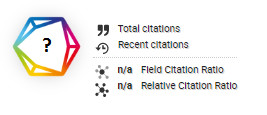Implications of the Influence of Corporate Financial Performance on Sukuk Ijarah in the Development of Indonesian Sharia Finance
DOI:
https://doi.org/10.46984/sebatik.v28i2.2489Keywords:
Sukuk Ijarah, Company Performance, Profitability, Liquidity, Leverage, Sharia Finance.Abstract
In this study, the purpose is to analyze the influence of Islamic financial capabilities, particularly focusing on performance metrics such as profitability, current liabilities, and leverage, on sukuk ijarah issuance by corporations during the observation period from 2018 to 2024 in Indonesia. The sample consists of all companies registered with the Financial Services Authority (OJK) that issue sukuk under the sukuk ijarah scheme. The study evaluates the companies' performance in terms of their ability to generate profitability, finance short-term debts arising from sukuk ijarah issuance, and meet long-term obligations when the sukuk mature. This study employs multiple regression analysis using the Eviews 11 software. The results indicate that profitability, liquidity, and leverage, both individually and collectively, significantly affect sukuk ijarah performance. Furthermore, companies issuing sukuk ijarah during the research period demonstrate that sukuk ijarah can enhance profitability. Additionally, these companies exhibit the ability to meet both short-term and long-term debt obligations, ensuring the repayment of underlying assets tied to the issued sukuk ijarah.
References
CS, S. A. (2019). Analisis pengaruh intellectual capital terhadap kinerja keuangan perusahaan (Studi kasus perusahaan sektor keuangan yang terdaftar di Bursa Efek Indonesia (BEI) pada tahun 2008-2017). (Doctoral dissertation, Universitas Gadjah Mada).
Dulyanti, U. (2024). Pengaruh total hutang dan modal kerja bersih terhadap laba bersih. Jurnal Ekonomi dan Bisnis, 2(2), 311–322. Retrieved from https://repository.uhn.ac.id/handle/123456789/6814
Fatah, D. A. (2017). Perkembangan obligasi syariah (sukuk) di Indonesia: Analisis peluang dan tantangan. Al-’Adalah, 8(1), 35–46. Retrieved from file:///Users/meutiah/Downloads/234-888-1-PB%20(1).pdf
Handayani, M., Kadriani, E., Ayuningsih, I., & Farlian, T. (2020). Analisis penilaian skor pengungkapan Islamic Social Reporting (ISR) pada perusahaan yang terdaftar di Jakarta Islamic Index (JII). Jurnal Penelitian Ekonomi Akuntansi (JENSI), 4(2), 146–160. Retrieved from https://ejurnalunsam.id/index.php/jensi/article/view/2927
Sulistio, H. G. (2024). Pengaruh klasifikasi emiten syariah dan konvensional bagi investor untuk memilih emiten perusahaan yang tercatat di Bursa Efek. Sebatik, 28, 156–162. Retrieved from https://jurnal.wicida.ac.id/index.php/sebatik/article/view/2373
Ikatan Akuntan Indonesia. (2024). PSAK Syariah for academic. Ikatan Akuntan Indonesia, 6.
Khalifaturofi’ah, S. O., & Nasution, Z. (2016). Analisis kinerja keuangan perusahaan terhadap penerbitan sukuk ijarah di Indonesia. Jurnal Akuntansi dan Manajemen, 6(22), 143–244. Retrieved from https://eprints.perbanas.ac.id
Khusnul, F., & Wira, Y. A. (2021). Perkembangan keuangan syariah dalam realitas politik di Indonesia. Jurnal Ilmiah Ekonomi Islam, 7(3), 1594–1601. Retrieved from https://jurnal.stie-aas.ac.id/index.php/jei/article/download/2687/1635
Latifah, S. (2020). Peran sukuk Surat Berharga Syariah Negara (SBSN) dalam pertumbuhan pembangunan ekonomi Indonesia. Jurnal Ilmiah Ekonomi Islam, 6(3), 421–427. Retrieved from https://www.journal.uinsgd.ac.id/index.php/aksy/article/view/14055
Masruri, F. A., & Khikmah, M. E. Y. (2021). Pengaruh ukuran perusahaan, likuiditas, dan jatuh tempo obligasi terhadap tingkat sewa sukuk ijarah pada perusahaan yang menerbitkan sukuk ijarah di Bursa Efek Indonesia periode 2015–2019. Jurnal Akuntansi Bisnis dan Ekonomi, 6(2), 1739–1754. https://doi.org/10.33197/jabe.vol6.iss2.2020.623
Mutia, E., Rahmawaty, R., & Afrianandra, C. (2018). Value at risk of sukuk ijarah and mudharabah in Indonesia. Journal of Accounting Research, Organization and Economics, 1(1), 65–73. https://doi.org/10.24815/jaroe.v1i1.10751
Nadia, M., & Wicaksono, B. (2024). Penerbitan obligasi syariah dan return saham. Monex: Journal of Accounting Research, 13(2), 148. Retrieved from https://ejournal.poltekharber.ac.id/index.php/monex/article/view/6748
Noor, M. (2022). Blue Sukuk: Strategi Dan Konsep Pembiayaan. Jurnal Pajak Dan Keuangan Negara (PKN), 4(1S), 414–426. https://doi.org/10.31092/jpkn.v4i1S.1924
Ogie, M. A., & Laila, N. (2020). Pengaruh leverage, profitabilitas, dan kondisi ekonomi terhadap imbal hasil sukuk ijarah korporasi periode 2015–2018. Jurnal Ekonomi Syariah Teori dan Terapan, 7(2), 389–400. https://doi.org/10.20473/vol7iss20202pp389-400
OJK. (2018). Pasar modal syariah. Retrieved from https://ojk.go.id/id/kanal/syariah/pages/pasar-modal-syariah.aspx
Peterson, E. W. F. (2017). The role of population in economic growth. SAGE Open, 7(4), 1–15. https://doi.org/10.1177/2158244017736094
Primadiany, E., & Atmasari, L. (2018). Sukuk ijarah dalam kinerja keuangan. Jurnal Darmajaya, 1(2), 108–119. Retrieved from https://jurnal.darmajaya.ac.id/index.php/PSND/article/view/1300
Romadhoni, D. D., Ramidah, N., & Damayanti, R. K. (2022). Optimalisasi peran sukuk sebagai instrumen investasi syariah dalam mendorong pembangunan ekonomi nasional. Diponegoro Journal of Islamic Economics and Business, 2(2), 85–98.
Syafrida, H. S. (2022). Metodologi penelitian. Retrieved from https://repositori.uma.ac.id/bitstream/123456789/16455/1/E-Book%20Metodologi%20Penelitian%20Syafrida.pdf
Theodoridis, T., & Kraemer, J. (2021). Metode penelitian kuantitatif. Pascal Books.
Wiwin. (2020). Perkembangan dan prospek sukuk: Tinjauan teoritis. Muqtasid: Jurnal Ekonomi Islam, 5(1), 99–122. https://doi.org/10.18326/muqtasid.v5i1.99-122
Zakiyah, F. (2021). Perbandingan kinerja keuangan sukuk syariah dan obligasi konvensional yang listing di Bursa Efek Indonesia. Dinar: Jurnal Prodi Ekonomi Syariah, 5(1), 149–176. Retrieved from https://e-jurnal.stail.ac.id/index.php/dinar/issue/view/29
Downloads
Published
How to Cite
Issue
Section
License
Copyright (c) 2024 Meutia Handayani, Rizki Ramadhan, Talbani Farlian

This work is licensed under a Creative Commons Attribution 4.0 International License.
Authors retain all their rights to the published works, such as (but not limited to) the following rights; Copyright and other proprietary rights relating to the article, such as patent rights, The right to use the substance of the article in own future works, including lectures and books, The right to reproduce the article for own purposes, The right to self-archive the article








